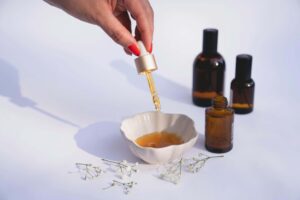Deciphering Labels

In the realm of skincare and cosmetics, terms like “natural” and “clean” are often used interchangeably, leading to confusion among consumers. While both concepts share a focus on using safer, more wholesome ingredients, there are distinct differences between natural and clean beauty. In this blog post, we’ll explore these nuances to help you better understand and navigate the world of clean and natural beauty.
Defining Natural Beauty
Natural beauty products are formulated using ingredients derived from nature, such as botanical extracts, essential oils, and minerals. These products often contain minimal processing and are free from synthetic additives, fragrances, and preservatives. The emphasis in natural beauty is on harnessing the power of plants and natural substances to nourish, protect, and enhance the skin without resorting to artificial or potentially harmful ingredients.
Understanding Clean Beauty
Clean beauty, on the other hand, extends beyond just the use of natural ingredients. While clean beauty products may contain natural components, their formulation also emphasizes safety, transparency, and sustainability. Clean beauty brands strive to exclude potentially harmful chemicals, toxins, and controversial additives from their products, regardless of whether they are naturally derived or synthetic.
Key Differences Between Natural and Clean Beauty
- Ingredient Focus: Natural beauty prioritizes ingredients sourced directly from nature, while clean beauty places greater emphasis on safety and transparency, regardless of the ingredient’s origin. Clean beauty products may include some synthetic ingredients deemed safe and non-toxic.
- Safety Standards: Clean beauty adheres to stricter safety standards, excluding a wider range of potentially harmful ingredients than natural beauty. While natural ingredients are generally considered safe, they may still pose risks if not properly processed or formulated.
- Transparency and Accountability: Clean beauty brands prioritize transparency by clearly disclosing their ingredients, sourcing practices, and manufacturing processes. This level of accountability ensures that consumers can make informed choices about the products they use on their skin.
- Sustainability and Ethics: Clean beauty encompasses broader ethical considerations, including sustainability, environmental impact, and social responsibility. Clean beauty brands often adopt eco-friendly practices, such as using recyclable packaging, minimizing waste, and supporting ethical sourcing initiatives.
- Certifications and Standards: While there are certifications for both natural and clean beauty products, clean beauty certifications tend to be more comprehensive, covering a broader range of criteria related to ingredient safety, environmental impact, and ethical sourcing.
Choosing Between Natural and Clean Beauty
When deciding between natural and clean beauty products, it’s essential to consider your personal values, skin type, and specific skincare needs. Some individuals may prioritize using products with purely natural ingredients, while others may opt for clean beauty formulations that offer a balance of efficacy, safety, and sustainability.
If you have sensitive skin or allergies, you may find that clean beauty products provide a gentler alternative, as they exclude potential irritants and allergens. Conversely, if you prefer products with a minimal ecological footprint, you may gravitate towards clean beauty brands that prioritize sustainability and environmental stewardship.

In conclusion, while natural and clean beauty share a common goal of promoting safer, healthier alternatives to conventional skincare and cosmetics, there are distinct differences between the two concepts. Natural beauty focuses on using ingredients sourced from nature, while clean beauty extends beyond natural ingredients to prioritize safety, transparency, and sustainability.
By understanding these nuances, consumers can make more informed choices about the products they use on their skin, aligning with their values and preferences. Whether you lean towards natural beauty, clean beauty, or a combination of both, the most important thing is to prioritize products that support your skin’s health and well-being while respecting the planet and its resources.




